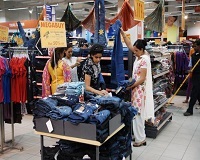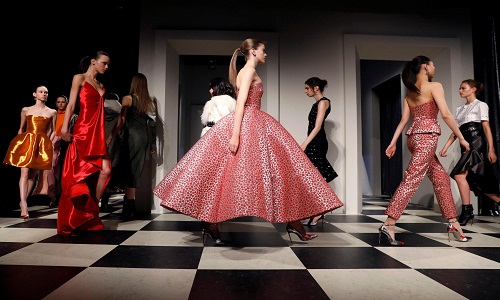"While outwardly, predictive analytics may appear to be antithetical to creativity; design houses, manufacturers, and retailers have always engaged in analysis, albeit perhaps not in a formal sense. Reviewing what has sold well previously, researching the history of a brand to inform future styles and staying on top of things like color trends are all basic analytics that have always being used by designer teams and merchandisers. However, the newer role of data is meant to give more developed insight into what consumers want."

A long tradition
While outwardly, predictive analytics may appear to be antithetical to creativity; design houses, manufacturers, and retailers have always engaged in analysis, albeit perhaps not in a formal sense. Reviewing what has sold well previously, researching the history of a brand to inform future styles and staying on top of things like color trends are all basic analytics that have always being used by designer teams and merchandisers. However, the newer role of data is meant to give more developed insight into what consumers want.
‘Edited’ is a retail technology company that helps retailers and brands around the world ensure they have the right product at the right time for the right price. Among other things, it creates dashboards where executives can compare their own successes and failures from the previous season, and that of their competitors. Planning toolkits also help companies set up trend parameters, identify key growth areas, and the subcategories that drove that business.
price. Among other things, it creates dashboards where executives can compare their own successes and failures from the previous season, and that of their competitors. Planning toolkits also help companies set up trend parameters, identify key growth areas, and the subcategories that drove that business.
Use of smart apps
Use of data can help brands develop a closer relationship with their customer. As per a Cotton Incorporated Lifestyle Monitor™ Survey, nearly half (46 per cent) of all consumers would like apparel brands and retailers to use information from their purchase history to personalise their shopping experience, Additionally, 46 per cent consumers wish apparel brands and retailers knew more about what they like and how they shop. And more than one-third would like brands and retailers to focus more on local trends and styles in their cities.
Data can be a guide when a designer feels creatively stifled or when his team feels that the data is pointing out something new and different which they should try, even if that’s not the case. The study points out, nearly 40 per cent of consumers use apparel brand and retailer apps on their smartphones or computers to shop online or in-store. And 54 per cent consumers are more likely to buy clothes from a store that offers personal clothing collections based on previous purchase history and preferences.
No guessing games
This is the type of data that brands and merchandisers can mine for future collections. According to Tableau Software fashion retailers are using embedded analytics to validate orders for certain styles, size, and color to avoid incurring additional manufacturing costs for small production run sizes. Fashion Snoops is another forecasting agency that works with companies to act on future trends. Their perspective is to understand how the consumer lives, what they eat, what kind of music they listen to, where they travel. All this sets the tone and intention on product that will serve and resonate with them. The company also identifies cultural macro and micro trends using news articles and social media. They follow the trends throughout the year and then help inspire design themes based on that. This includes color, texture, shape, and material. For brands and retailers, having these various data points will help take the guesswork out of how best to reach consumers.












